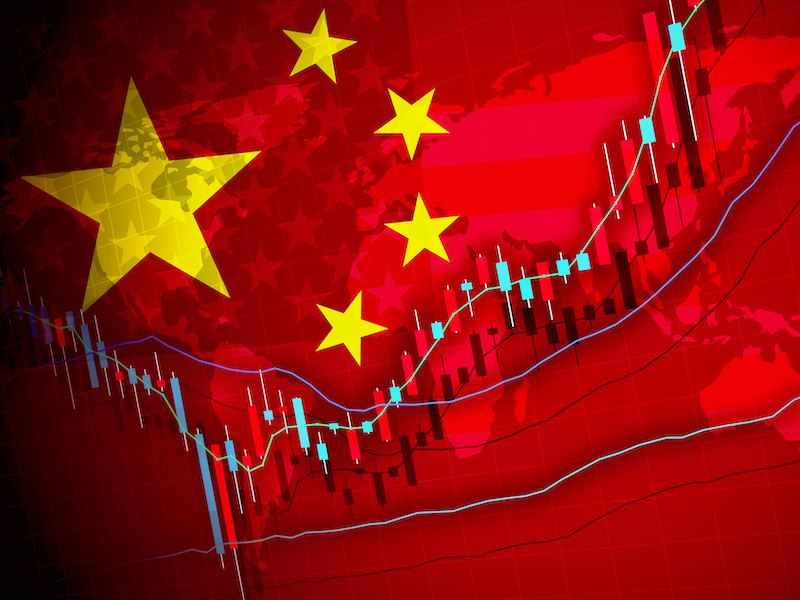

Tariffs could push China to apply more aggressive fiscal policy
Chris Kushlis of T. Rowe Price says a 60% U.S. duty on imports from China would not be easily offset through currency depreciation
- Featuring: Chris Kushlis
- November 12, 2024 November 18, 2024
- 13:01
- From: T. Rowe Price

(Runtime: 5:00. Read the audio transcript.)
**
The Chinese government’s preferred method of regulating its economy — short term depreciation of the yuan in times of volatility — may be insufficient if new tariffs are imposed by the U.S. next year, says Chris Kushlis.
The vice-president of T. Rowe Price Group, Inc. and emerging market sovereign analyst in the firm’s fixed-income division said a 60% tariff on Chinese imports to the U.S., as proposed by president-elect Donald Trump, would be “significant” and likely prompt a new policy response.
“This might push Chinese policymakers to [get] more aggressive on using fiscal policy, because they realize that they don’t have any other choice,” he said. “It would be hard to find ways to easily offset that with just currency depreciation.”
Speaking on the Soundbites podcast, Kushlis said the People’s Bank of China has a different monetary framework than most developed markets do.
“Traditionally, it’s been more of a quantity-based framework, where the interest rate is the secondary tool,” he said. “They generally push quantities of money or quantities of credit.”
That approach may need to be augmented with interest-rate cuts, he said, adding that tariffs have the potential to cause real strain on an already slowing Chinese economy, particularly on the export sector, which has been a bright spot for China in recent years.
A new tariff strategy by the U.S. is by no means definite, however.
“That would impose quite significant costs on the American consumer,” Kushlis said. “Tariffs inherently are inflationary.”
He said Trump may only be interested in raising the idea of tariffs as a form of negotiating leverage.
“I think the Chinese are very open to exploring the potential for negotiation, but we’ll have to see what the actual asks are,” Kushlis said.
Meanwhile, there are opportunities for developed-market investors in emerging-market fixed income, as inflation slows.
“There’s lower investment and too much money chasing too few safe assets. So, you see the government bonds really do well,” he said. “They’ve done very well in China. And I think they’ll continue to be well anchored, even in the face of some incremental fiscal stimulus.”
If China succeeds in jumpstarting domestic demand, that would resonate throughout Asian economies, Kushlis said.
“It would generally affect Asia the most,” he said. “Broadly positive sentiment towards China would spill over to more broad positive sentiment in emerging markets and be supportive of emerging-market currencies.”
After steady growth of about 8% per year in the early 2010s, the Chinese economy has slowed to about 5% annual growth in recent years, due to a significant downturn in an over-supplied housing market. In its attempt to chase growth and build infrastructure as a stimulus tool, the central government allowed local governments to run up significant debt.
“They’ve gotten to a point where local governments are struggling with those debt loads, and they’ll have to eventually do something about it,” he said.
In recent years, the Chinese government has put a focus on technology and tech-driven sectors like green energy.
“They think that by doing so, they’ll generate more productivity over the long term, and that these new growth sectors will eventually outweigh the old growth sectors,” he said. “But while they’re going through this transition, domestic demand is still very weak, and what you really need is fiscal support to do it.”
Despite its setbacks, he said China continues to play a significant role in the global economy.
“If you just look at the numbers, it’s about 15% of global GDP. Its population is just under 20% of global population, so it will have a gravitational pull, so to speak,” he said. “So, even though one may not have an overall positive view on the macro, there are ways to invest in sub sectors. There is a depth of opportunity there that you don’t get in a lot of different emerging markets.”
**
This article is part of the Soundbites program, sponsored by Canada Life. The article was written without sponsor input.
